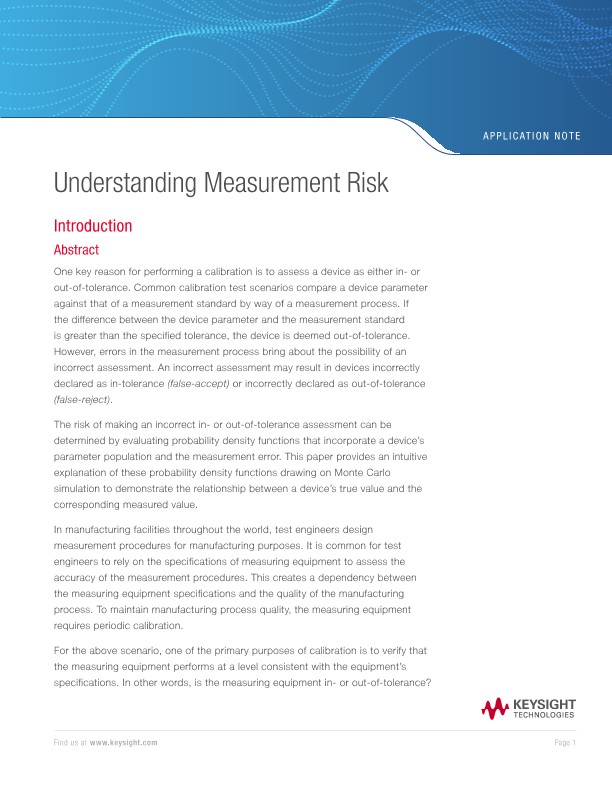
Understanding Measurement Risk
Application Notes
One key reason for performing a calibration is to assess a device as either in- or out-of-tolerance. Common calibration test scenarios compare a device parameter against that of a measurement standard by way of a measurement process. If the difference between the device parameter and the measurement standard is greater than the specified tolerance, the device is deemed out-of-tolerance. However, errors in the measurement process bring about the possibility of an incorrect assessment. An incorrect assessment may result in devices incorrectly declared as in-tolerance (false-accept) or incorrectly declared as out-of-tolerance (false-reject).
The risk of making an incorrect in- or out-of-tolerance assessment can be determined by evaluating probability density functions that incorporate a device’s parameter population and the measurement error. This paper provides an intuitive explanation of these probability density functions drawing on Monte Carlo simulation to demonstrate the relationship between a device’s true value and the corresponding measured value.